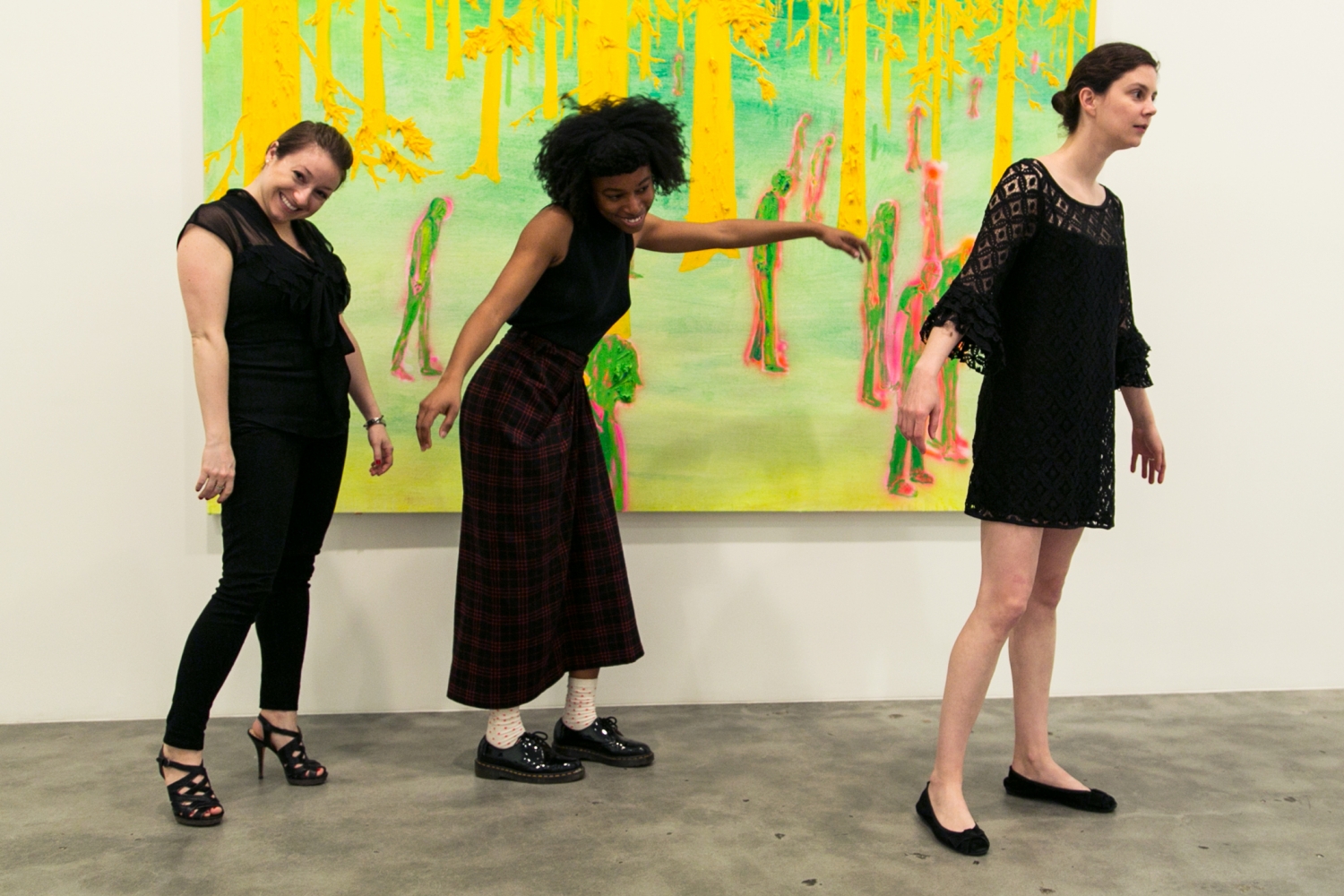wanderlust
A Forest Of Ghosts

Walking through Canadian artist Kim Dorland’s Ghosts of You and Me, a haunting exhibition at Chelsea’s Mike Weiss Gallery, I recalled Little Jimmy Scott singing his ode to the forest “Sycamore Trees” in David Lynch’s classic television show Twin Peaks. Depicting often singular, solitary figures in tree-filled woods, Dorland’s monumental paintings reflect an eerie yet beautiful psychological atmosphere, resembling Lynch at his most hallucinatory.
In The Thick Of It
His third solo exhibition with Mike Weiss, Dorland’s Ghosts of You and Me takes its name from a Leonard Cohen lyric, which perfectly reflects the ghostly, haunted feeling that pervades the exhibition. Capturing this unsettling environment through his artistic process, Dorland’s paintings feature extremely thick, black impasto, rendering them almost sculptural. Unable to be perfectly captured in a photograph, the heavy all-consuming black adds an almost tactile weight to the paintings.
Dorland combines this black impasto with blindingly bright colors, which add to the physical presence of the work. With an otherworldly glow, the fluorescent colors in paintings such as “Three Arms” is painful to regard, allowing the experience to be both visually and physically stimulating.
While Dorland’s process and subjects appear cutting-edge and undoubtedly contemporary, his awareness and reverence of the history of Canadian art pervades his paintings. His wooden landscapes take inspiration from the legacy of landscape painters in Canada, such as the lauded Group of Seven popular in the 1920s and 1930s.
The work bearing the most references to the Group of Seven is “The Painter In His Canoe.” Referencing Canadian landscape painter Tom Thomson, the searing green and deep black image of a singular man on a canoe mirrors Thomson’s mysterious death. Disappearing during a canoeing trip in 1917, Thomson was found dead 8 days later in an assumed accidental drowning—although his death is still debated today. By suggesting this bizarre chapter in Canadian art history, Dorland’s “The Painter in His Canoe” becomes imbued with an even more ominous, dark and ghostly undertone.
If An Artist Paints In The The Forest And There's Nobody There To Se Him…
Perhaps the most alluring paintings in Dorland’s exhibition are those depicting the solitary figure of the artist. In “Dripping Dream,” for example, Dorland portrays the singular figure of an artist painting on his easel, surrounded by a thick and silent audience of trees. Representing the loneliness and driven obsession of creation, Dorland captures the often alienated experience of the artist that has become a well known painting trope throughout the history of art.
While the artist may feel alone in “Dripping Dream,” he is most certainly not; we viewers are also there with him as we become effectively pulled into the red and black landscape. With the silhouetted trees, Dorland’s painted world also feels as if Twin Peaks’s Dale Cooper may appear around every tree—finally escaping the Black Lodge.
Mike Weiss Gallery – “Ghosts of You and Me” by Kim Dorland – May 2 to June 8, 2013 – Tue-Sat: 10am-6pm [Price range of works: $17,800-22,800]
Article by Emily Colucci
Be the first to write a comment.
Your feedback




